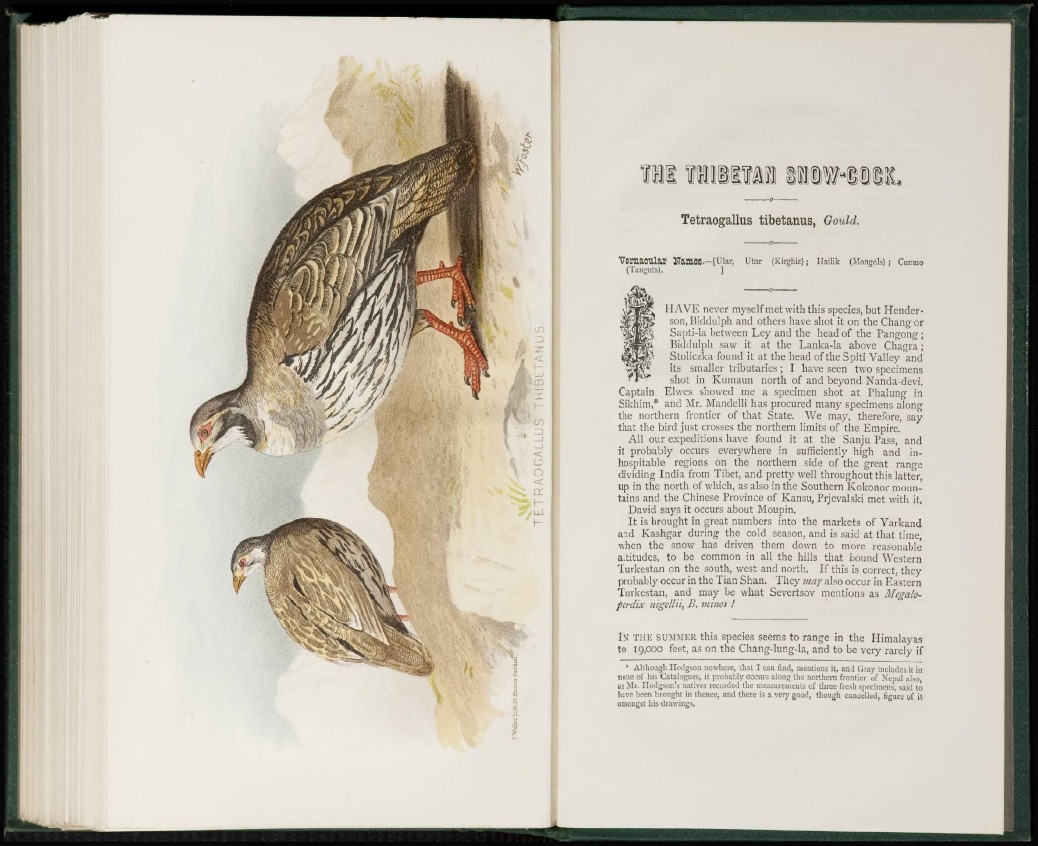
Tetraogallus tibetanus, Gould.
Vernacular NamOS.—[Ular, Utar (Kirghiz); HaUik (Mongols) ; Cunmo
(Tanguts).
II AVE never myself met with this species, but Henderson,
Biddulph and others have shot it on the Chang or
Sapti-la between Ley and the head of the Pangong;
Biddulph saw it at the Lanka-la above Chagra;
Stoliczka found it at the head of the Spiti Valley and
its smaller tributaries ; I have seen two specimens
shot in Kumaun north of and beyond Nanda-dcvi.
Captain Elwes showed me a specimen shot at Phalung in
Sikhim,* and Mr. Mandelli has procured many specimens along
the northern frontier of that State. We may, therefore, say
that the bird just crosses the northern limits of the Empire.
All our expeditions have found it at the Sanju Pass, and
it probably occurs everywhere in sufficiently high and inhospitable
regions on the northern side of the great range
dividing India from Tibet, and pretty well throughout this latter,
up in the north of which, as also in the Southern Kokonor mountains
and the Chinese Province of Kansu, Prjcvalski met with it.
David says it occurs about Moupin.
I t is brought in great numbers into the markets of Yarkand
and Kashgar during the cold season, and is said at that time,
when the snow has driven them clown to more reasonable
altitudes, to be common in all the hills that bound Western
Turkestan on the south, west and north. If this is correct, they
probably occur in the Tian Shan. They may also occur in Eastern
Turkestan, and may be what Sevcrtsov mentions as Megaloperdix
nigellii, B. minoi 1
IN THE SUMMER this species seems to range in the Himalayas
to 19,000 feet, as on the Chang-lung-la, and to be very rarely if
* Although Hodgson nowhere, that I can find, mentions it, and Gray includes it in
none of his Catalogues, it probably occurs along the northern frontier of Nepal also,
as Mr. Hodgson's natives recorded the measurements of three fresh specimens, said to
have been brought in thence, and there is a very good, though cancelled, figure of it
amongst his drawings.